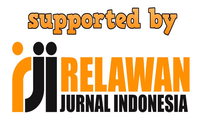TABOO EXPRESSIONS IN ASAHAN MALAY: AN ETHNOLINGUISTIC APPROACH
Abstract
Keywords
Full Text:
PDFReferences
Affini, L. N. (2017). Analisis kata tabu dan klasifikasinya di lirik lagu eminem pada album the marshal mathers lp. Jurnals Lensa, 93-113.
Allan, K., & Burridge, K. (2006). Forbidden words taboo and the censorin of language. Cambridge University Press.
Argasetya, S. M. (2009). Common features of english taboo words. Sanata Dharma University
Barus, J. (2018). Tabu dalam bahasa karo. Universitas Sumatera Utara.
Bednarek, M. (2006). Don’t say crap. Don’t use swear words.’ – Negotiating the use of swear/taboo words in the narrative mass media. The University of Sydney.
Bromhead, H. (2011). The reign of truth and faith: Epistemic expressions in 16th and 17th century English. Fucntion of Langugage. Vol. 18(2). 285-291
Culpeper, J. (2019). Taboo language and impoliteness. Oxford University Press
Dan, L. D & Septevany, E. (2020). Interpretation of taboos in giving gifts to chinese people: Semiotics perspective. Vol. 2(1).
Edwards, L. and Jenkins, R. (2015) The impact of chinese import penetration on the south african manufacturing sector. The Journal of Development Studies, 51, 320-340.
El Massri, A. N. (2018). Analyzing taboo language among female students in north gaza governorate global. Journal of HUMAN-SOCIAL SCIENCE. Vol.18(4).
Gao, C. (2013). A sociolinguistic study of english taboo language. Theory and Practice in Language Studies, Vol. 3 (12).
Haryati. (2020). The study of taboo and euphemism on the english department students in universitas pamulang. Lire Journal (Journal of Linguistics and Literature), Vol.4(1)
Jay, T. & Harris, C. C. King, K. (2008). Recalling taboo and nontaboo words. New York University
Junaidi, W. (2019). Konteks penggunaan bahasa tabu sebagai pendidikan etika tutur dalam masyarakat pidie. Jurnal Serambi Ilmu, Vol.20(1).
Klerk, V. D. (2021). How taboo are taboo words for girls?. United States of America.
Laksana, I. K. D. (2009). Tabu bahasa: salah satu cara memahami kebudayaan bali. Udayana University Press
Mocanu, M. (2017). Taboo and euphemism in the religious language. International Letters of Social and Humanistic. Vol. 75.
Ningjue, Z. (2010). Taboo language on the internet: an analysis of gender differences in using taboo language. Kristianstad University.
Nordquist, R. (2018). The definition of taboo language. https://www.th oughtco.com/taboo-language-1692522.
Peeters, T. & Paauwe, J. & Voorde, K. (2020). People analytics effectiveness: Developing a framework. Journal of Organizational Effectiveness: People and Performance. ahead-of-print. 10.1108/JOEPP-04-2020-0071.
Rahman, N. I. Z. (2019). Penggunaan kata tabu di media sosial. Kajian Linguistik Forensik. Vol.20 (2).
Sari, Y. W. (2020). Euphemistic expression in the independent news: Semantics approach. Putera Batam University.
Supriyadi, E. (2013). Kajian bahasa tabu dan eufemisme pada kumpulan cerpen “senyum karyamin” karya ahmad tohari. UMS.
Takele, B. (2020). Analysis of linguistic taboo words related to sexual organs and their euphemistic expressions in oromo. Madda Walabu University. DOI:10.13140/RG.2.2.36077.1 0723
Taufik, Y. A. (2017). The use of taboo words in war dogs movie (2016): A sociopragmatic study. Universitas Muhammadiyah Surakarta.
Wahid, R. A. (2008). Kamus bahasa melayu asahan. LP2IK
Zhao, Y. & Zhang. (2013), W. Interpersonal function of the linguistic taboo. Beihua University.
DOI: https://doi.org/10.30743/ll.v9i1.10456
Refbacks
- There are currently no refbacks.
Fakultas Sastra
Universitas Islam Sumatera Utara (UISU), Medan
Jl. Sisingamangaraja Teladan Medan 20217
Telp. (061) 7869911, e-mail: language_literacy@sastra.uisu.ac.id









